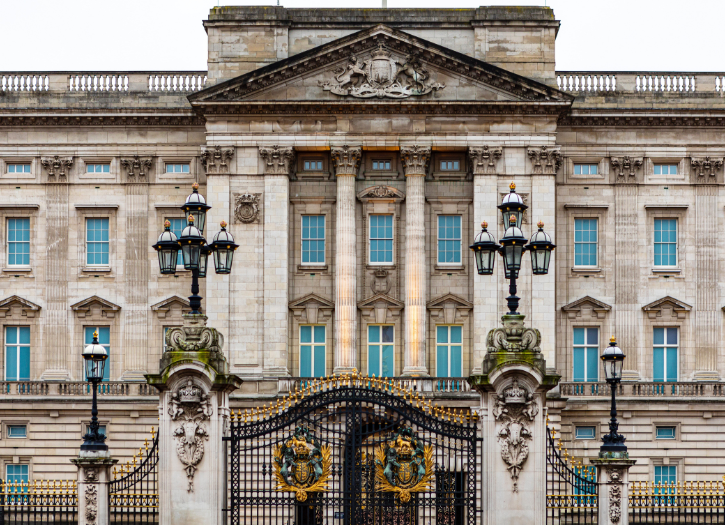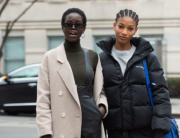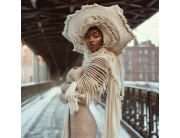Buckingham Palace is a royal residence and the administrative headquarters of the monarch of the United Kingdom. Located in the City of Westminster, the palace is often at the center of state occasions.
The front of the palace measures 355 feet (108 m) across, 390 feet (120 m) deep, by 80 feet (24 m) high and contains over 830,000 square feet (77,000 m2) of floor space. There are 775 rooms, including 188 staff bedrooms, 92 offices, 78 bathrooms, 52 principal bedrooms, and 19 staterooms. It also has a post office, cinema, swimming pool, doctor’s surgery, and jeweler’s workshop.
The principal rooms are contained on the piano nobile behind the west-facing garden façade at the rear of the palace. The center of this ornate suite of state rooms is the Music Room, its large bow the dominant feature of the façade. Flanking the Music Room are the Blue and the White Drawing Rooms. At the center of the suite, serving as a corridor to link the state rooms, is the Picture Gallery, which is top-lit and 55 yards (50 m) long. The Gallery is hung with numerous works including some by Rembrandt, van Dyck, Rubens, and Vermeer; other rooms leading from the Picture Gallery are the Throne Room and the Green Drawing Room.
The Green Drawing Room serves as a huge anteroom to the Throne Room and is part of the ceremonial route to the throne from the Guard Room at the top of the Grand Staircase. The Guard Room contains white marble statues of Queen Victoria and Prince Albert, in Roman costume, set in a tribune lined with tapestries. These very formal rooms are used only for ceremonial and official entertaining but are open to the public every summer.
Directly underneath the State Apartments are the less grand semi-state apartments. Opening from the Marble Hall, these rooms are used for less formal entertaining, such as luncheon parties and private audiences. Some of the rooms are named and decorated for particular visitors, such as the 1844 Room, decorated in that year for the state visit of Tsar Nicholas I of Russia, and the 1855 Room, in honor of the visit of Emperor Napoleon III of France. At the center of this suite is the Bow Room, where thousands of guests pass annually to the monarch’s garden parties. The Queen used a smaller suite of rooms in the north wing.
Between 1847 and 1850, when Blore was building the new east wing, the Brighton Pavilion was again plundered of its fittings. As a result, many of the rooms in the new wing have a distinctly oriental atmosphere. The red and blue Chinese Luncheon Room is made up of parts of the Brighton Banqueting and Music Rooms with a large oriental chimneypiece. At the center of this wing is the famous balcony with the Centre Room behind its glass doors.







Add Comment